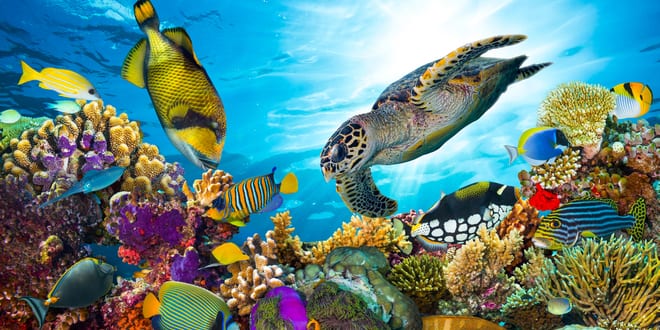In today’s technological world, one can print many things from hamburgers and salmon steaks to houses. Now, four Israeli institutions of higher learning have developed a way to use three-dimensional printing to restore coral reefs that are undergoing devastation around the world.
Coral reefs are becoming extinct due to many factors, such as global warming and accelerated urbanization in coastal areas, which places tremendous stress on marine life. “The rapid decline of coral reefs has increased the need for exploring interdisciplinary methods for reef restoration,” said Natalie Levy, a doctoral student at Bar-Ilan University (BIU) in Ramat Gan near Tel Aviv. “Examining how to conserve the biodiversity of coral reefs is a key issue, but there is also an urgent need to invest in technology to improve the coral ecosystem and our understanding of the reef environment.
In a paper recently published in the journal Science of the Total Environment under the title “Emerging 3D technologies for future reformation of coral reefs: Enhancing biodiversity using biomimetic structures based on designs by nature,” researchers from four of Israel’s leading universities described the 3D printing method they developed to preserve coral reefs.
Their innovation is based on the natural structure of coral reefs off the southern coastal Israeli city of Eilat. Still, the researchers said their model is adaptable to other marine environments and may help curb reef devastation plaguing coral ecosystems worldwide.
The joint research was led by Prof. Oren Levy and Natalie Levy of BIU’s Goodman Faculty of Life Sciences; Prof. Ezri Tarazi and doctoral student Ofer Berman of the Architecture and Town Planning Faculty of the Technion-Israel Institute of Technology in Haifa; Prof. Tali Treibitz and doctoral student Matan Yuval from the University of Haifa and Prof. Yossi Loya of Tel Aviv University (TAU).
The 3D process begins by scanning underwater photographs of coral reefs. A 3D model of the reef is assembled with a high degree of accuracy from this visual information. Thousands of images are photographed and sent to the lab to calculate the complex form of the reef and how that form encourages the evolution of reef species diversity.
The shortcode is missing a valid Donation Form ID attribute.
Next, the researchers use a molecular method of collecting environmental and genetic information that provides accurate data on the organisms living in the reef. This data is incorporated with other parameters and fed into a 3D technology algorithm, making it possible to build an interactive model of the reef. The 3D model can be designed to fit precisely the designated reef environment.
The final stage is the translation and production of a ceramic reef in 3D printing. The reefs are made of a unique ceramic that is naturally porous underwater and provides the most ideal construction and restoration needs to the affected area or establish a new reef structure as a foundation for the continuation of life. “Three-dimensional printing with natural material facilitates the production of highly complex and diverse units that is not possible with the usual means of mold production,” said Tarazi.
The process combines 3D scanning algorithms, together with environmental DNA sampling and a 3D printing algorithm that allows in-depth and accurate examination of the data from each reef as well as tailoring the printed model to a specific reef environment.
In addition, data can be re-fed into the algorithm to check the level of effectiveness and efficiency of the design after it has been implemented, based on information collected in the process. “Existing artificial reefs have difficulty replicating the complexity of coral habitats and hosting reef species that mirror natural environments. We introduce a novel customizable 3D interface for producing scalable structures, utilizing real data collected from coral ecosystems,” explained Natalie Levy.
Berman added that “the use of 3D printing allows extensive freedom of action, in reality, algorithm-based solutions, and the assimilation of sustainable production to develop large-scale marine rehabilitation.”
This study meets two critical needs to save coral reefs – the need for innovative solutions that make possible large-scale restoration adapted to support coral reefs worldwide and the recreation of the natural complexity of the coral reef – both in size and design – to corals, fish, and invertebrates for regrowth of natural coral reefs.
The researchers, who are currently installing several 3D printed reefs in the Gulf of Eilat, believe that their results will help them apply this innovation to other reef ecosystems around the world.
The shortcode is missing a valid Donation Form ID attribute.



